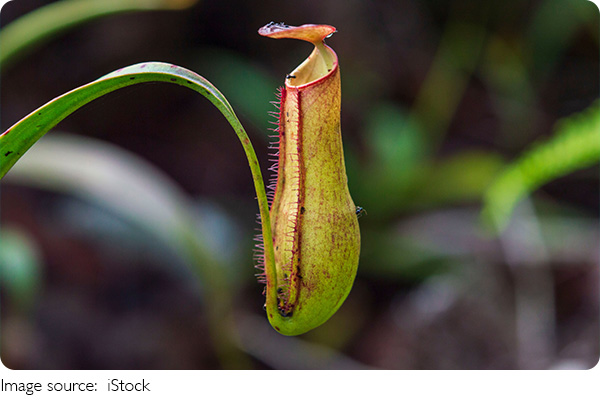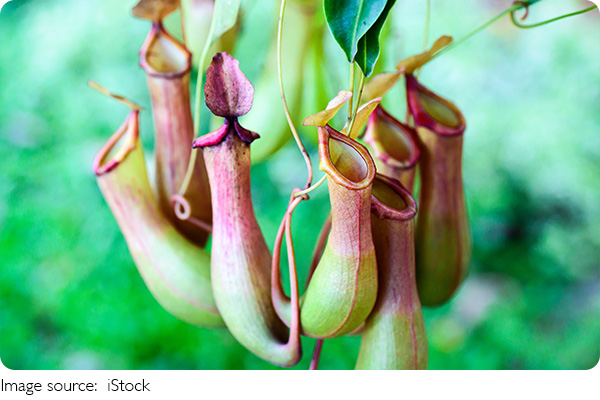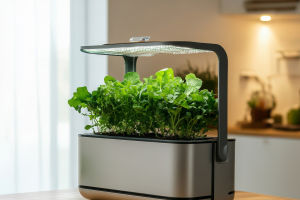The Pitcher Plant Mystery

Have you ever wondered if plants can be predators? It might sound strange, but in the case of Nepenthes, also known as the "pitcher plant" or "monkey cup," it's absolutely true.
Unlike most plants that rely on sunlight and water for nutrients, Nepenthes has evolved into a highly specialized insect-eating machine.
With its unique "pitcher" shaped leaves, it not only captures but also digests insects, providing the plant with essential nutrients. Let's take a closer look at how this fascinating plant works and what makes it so unique.
The Unique Structure of Nepenthes
The most striking feature of the Nepenthes plant is its specialized leaves, which have evolved into a trap that resembles a pitcher. These leaves, called "pitchers," are shaped like a small cup, and their sides are often lined with slippery surfaces that make it difficult for prey to escape once they've fallen inside. At the top of the pitcher is a lid, which can either be open or closed, and some species even produce nectar to attract insects. The lid helps keep rainwater from filling the pitcher, ensuring the trap remains functional.
The inside of the pitcher is filled with a digestive fluid that contains enzymes capable of breaking down the insect's body. The plant's "trap" is designed in such a way that once an insect lands on the lip of the pitcher, it usually slips and falls into the container. Once inside, the insect is unable to escape due to the slick walls and the inward-facing hairs lining the inside of the pitcher.
How Does Nepenthes Catch Its Prey?
Nepenthes attracts its prey through its sweet-smelling nectar. The nectar is often secreted around the edge of the pitcher, acting like a lure for unsuspecting insects. This scent works like a magnet, drawing insects closer to the plant. As the insects approach the pitcher, they land on the lip, which is often slightly curved and slippery. They then lose their footing and tumble into the pitcher's deep cavity.
Once inside, the insect becomes trapped in the fluid. The walls of the pitcher are lined with downward-pointing hairs, which further prevent the insect from climbing out. Over time, the insect is digested by the enzymes in the pitcher's fluid. While Nepenthes primarily relies on insects for food, it is known that some species may also consume small amphibians or even reptiles, although this is a rare occurrence.

The Digestive Process: A Natural Wonder
The digestive fluid inside the Nepenthes pitcher is a combination of water, enzymes, and other substances that help break down the insect's body. Once the insect is trapped and drowned, the digestive enzymes go to work, breaking down the insect's exoskeleton and extracting nutrients such as nitrogen, phosphorous, and other vital elements. These nutrients are then absorbed through the walls of the pitcher and used by the plant to grow and thrive.
This process is a clear example of how Nepenthes has adapted to nutrient-poor environments, such as acidic soils or areas with little organic matter. Insects provide the plant with essential nutrients that it otherwise wouldn't be able to obtain through traditional photosynthesis. The ability to digest animals is what sets Nepenthes apart from most other plants, making it one of the most fascinating carnivorous plants in the world.
The Relationship Between Nepenthes and the Environment
Nepenthes typically thrives in tropical and subtropical regions, particularly in Southeast Asia, Madagascar, and parts of Australia. These areas are often characterized by poor, acidic soils, which are deficient in essential nutrients like nitrogen. Because of this, plants like Nepenthes have evolved to become carnivorous, using insects to supplement their nutrient intake.
Interestingly, Nepenthes plants play an important role in their ecosystems. While they are predators, they are also a source of food for other animals. For example, some species of ants and birds are known to feed on the nectar of Nepenthes, while other animals may benefit from the insects that the plants capture. In this way, the plant contributes to the biodiversity of its environment, even while it's "feeding" on the creatures that happen to get too close.
Why Do People Love Nepenthes?
One of the reasons why Nepenthes is so captivating is the fact that it's a living example of how plants can adapt to extreme environments. Not only does it offer a unique solution to the problem of nutrient-poor soil, but it also demonstrates the complex relationships that plants can have with their environment. Watching a Nepenthes trap an insect is truly a marvel of nature, and for many, it sparks a sense of wonder and curiosity.
Additionally, Nepenthes is a popular plant among carnivorous plant enthusiasts and gardeners who enjoy growing unique and exotic plants. These plants are often seen as "living curiosities" because of their unusual appearance and their ability to "hunt" for food. For those with a green thumb, growing Nepenthes can be a fun and rewarding challenge. They're not only beautiful but also a great conversation piece.
Conclusion: A True Natural Wonder
In conclusion, the Nepenthes plant, with its unique pitcher-shaped leaves and insect-trapping abilities, is a true marvel of nature. Its fascinating ability to capture and digest prey allows it to thrive in environments that would otherwise be inhospitable to most plants. By evolving into a carnivorous plant, Nepenthes has found a remarkable solution to nutrient-poor soils, making it an incredible example of how plants adapt to their surroundings.
So, if you're ever in a tropical or subtropical region, keep an eye out for these extraordinary plants. Whether you're a nature lover, a gardener, or just someone curious about the wonders of the plant world, Nepenthes will surely capture your imagination with its unique way of life.
Have you ever encountered a Nepenthes plant or tried to grow one? We'd love to hear your thoughts or experiences! Feel free to share in the comments below.
-
 World's Oldest PlantsDo plants really live for thousands of years? Discover the world's oldest plants and the secrets behind their amazing longevity!
World's Oldest PlantsDo plants really live for thousands of years? Discover the world's oldest plants and the secrets behind their amazing longevity! -
 Bamboo FactsCould Bamboo Be The Most Valuable Plant On Earth? Here’s Why!
Bamboo FactsCould Bamboo Be The Most Valuable Plant On Earth? Here’s Why! -
 Grow Your OwnDiscover how to grow vegetables from seed to table and enjoy fresh, healthy food from your own garden!
Grow Your OwnDiscover how to grow vegetables from seed to table and enjoy fresh, healthy food from your own garden!